
Beans are among the healthiest foods you can eat. They are high in protein, minerals, certain vitamins, fiber and antioxidants. At the same time, they are low in calories, with almost no fat and zero cholesterol. They also score low on the glycemic index, meaning they do not spike your blood sugar. And they are cheap! But there are many different types of beans. Which one is healthiest?
Every bean variety has different nutritional strengths:
- Pinto beans are highest in overall phenolic (antioxidant) content.
- Red beans are the highest in protein.
- Mung beans have the most fiber, and are also highest in the vitamins thiamin and folate.
- Adzuki beans are highest in the minerals magnesium, phosphorous, potassium, zinc and copper.
So which beans are the healthiest depends on what you are looking for.
Adzuki may be the healthiest type of bean overall, because it is highest in many minerals, and near the top in fiber and protein.
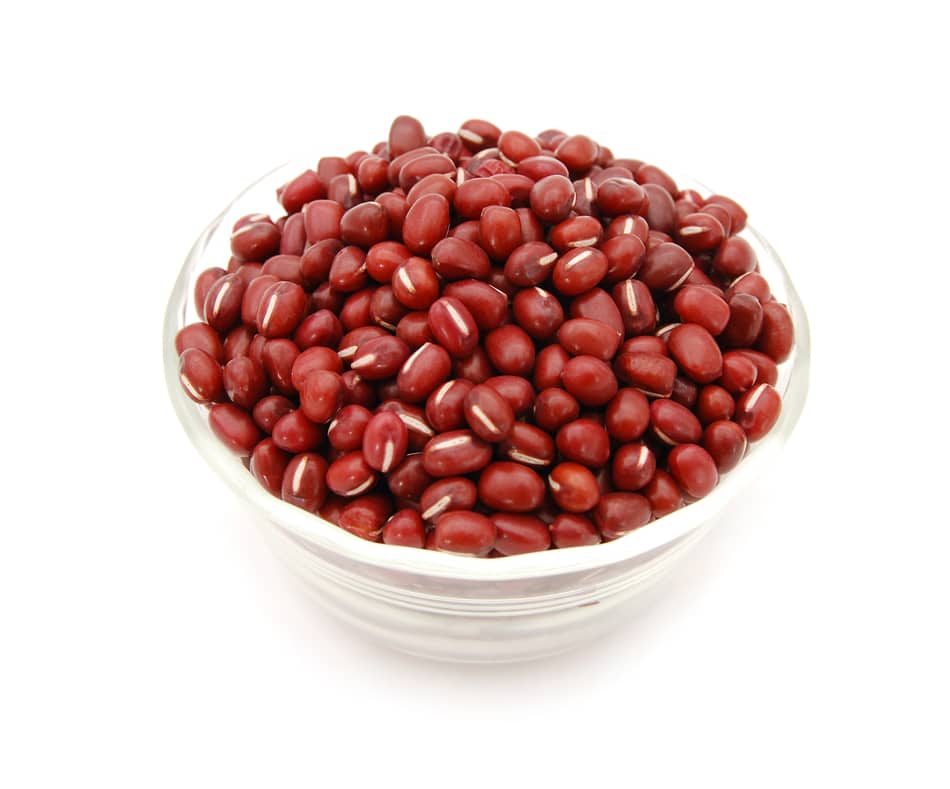
Among the more commonly available beans, black beans may be the healthiest choice you can make. They are one of the highest scoring beans for antioxidants, fiber and many minerals.
Below is a chart comparing popular beans and key nutrient measures, and here are more highlights:
What Bean is Highest in Protein?
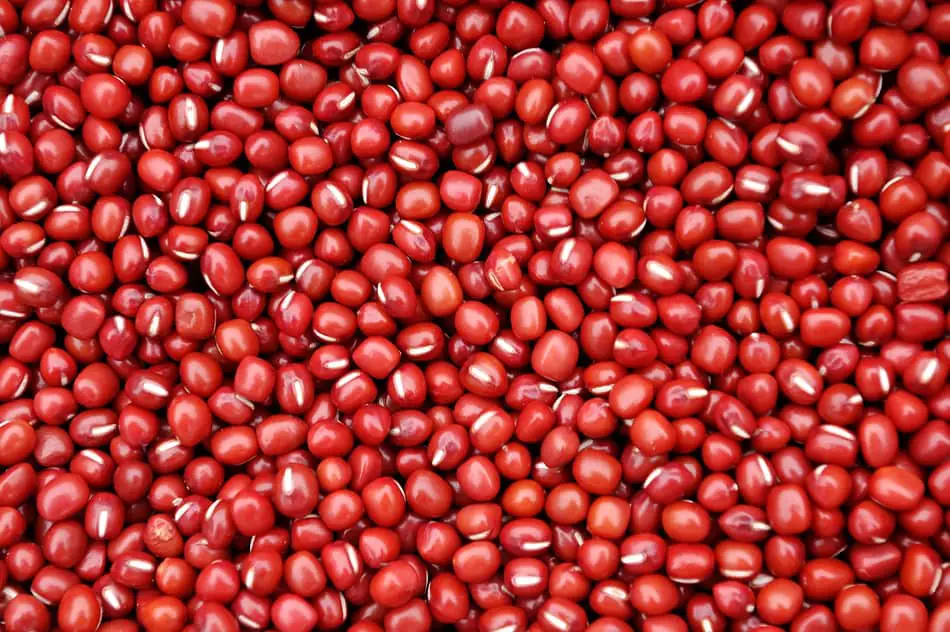
Red beans are the bean highest in protein at 7.98 grams per serving. Navy beans come in second place at 7.53 grams per serving, and adzuki beans are essentially tied at 7.52 grams of protein per serving.
All beans are a good source of protein and can substitute for meat in any meal. You may have heard that they are not a complete protein, meaning they do not have all the essential amino acids. If you pair your beans with rice, tortillas, quinoa, or other grain-based food, you will have a complete protein meal. Even if you don’t pair the beans with other foods at the same meal, as long as you get the other amino acids from other foods in your diet that day, your body can create a complete protein from the nutrients in beans.
What Bean is Highest in Fiber?
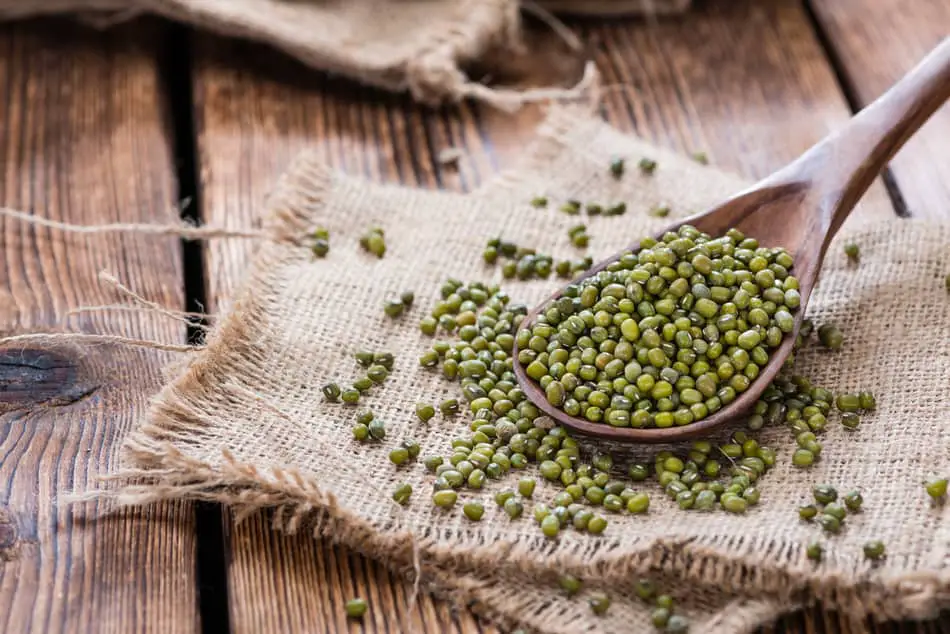
Mung beans are the bean highest in fiber at 7.6 grams per serving. Adzuki is a close second at 7.3 grams of fiber, and black beans come in third place at 6.9 grams per serving.
Beans are one of the best sources of dietary fiber. A high-fiber diet can help control diabetes and maintain healthy blood glucose levels1. Fiber helps keep you regular2, feeds your gut microbiome2, and may protect against heart disease3 and colon cancer4. And if that weren’t enough, since high-fiber foods like beans are filling, they can help keep your weight down3.
What Bean is Highest in Antioxidants?
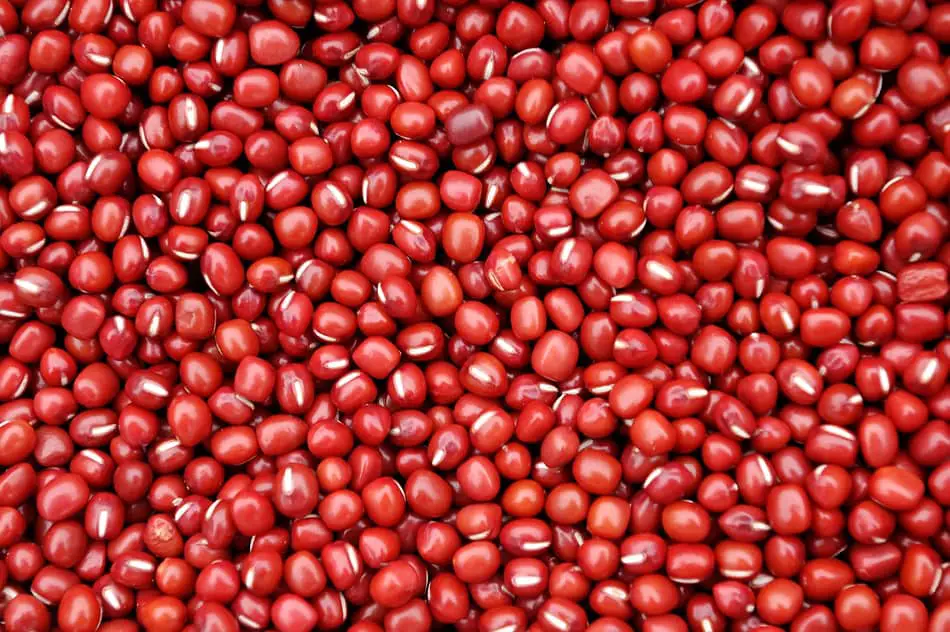
The bean with the highest levels of antioxidants, as measured by total phenolic content, is the red bean, at 45.7 mg/g. Pinto beans come in second place, at 33.4 mg/g, and black beans are the third-highest in antioxidants at 32.9 mg/g.
As with fruits and vegetables, the color of the bean is a rough guide to its level of antioxidants. In general, the more colorful beans tend to offer higher levels of antioxidants.
What Bean is Lowest in Calories?
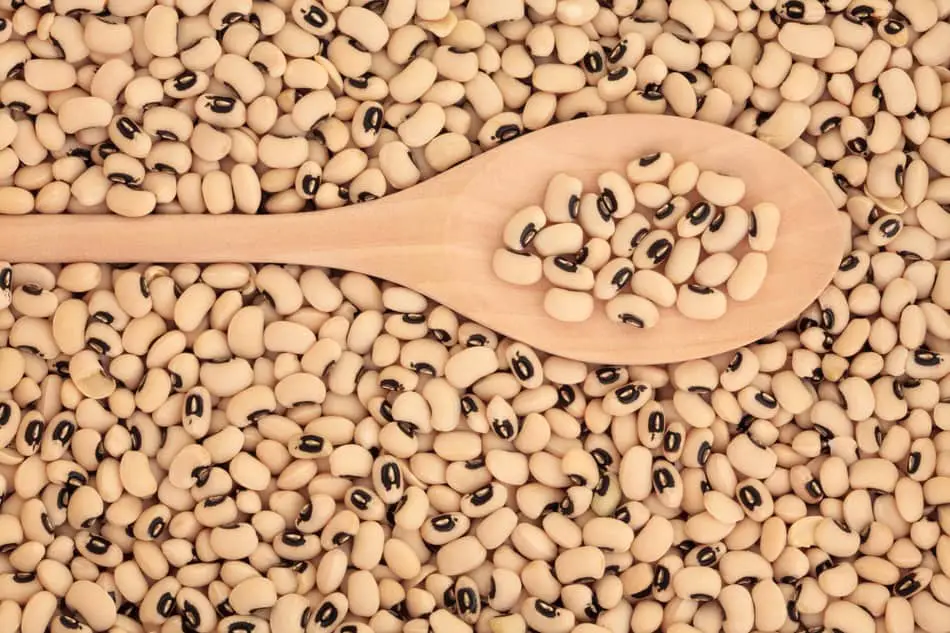
All beans are are relatively low in calories, given their high nutrient content. However, if you want to choose a lower-calorie bean, black-eyed peas are the lowest at 60 calories per serving (black-eyed peas are really a bean, not a pea). The second-lowest-calorie bean variety is fava at 71 per serving and lima beans come in third place at 79 calories per serving.
All beans are a terrific food for weight loss. One often-cited study says it best with its title: “Bean consumption is associated with greater nutrient intake, reduced systolic blood pressure, lower body weight, and a smaller waist circumference in adults.”5 This study was based on the consumption of a variety of bean types.
Which Bean is Highest in Minerals?
- White beans are highest in calcium and iron
- Adzuki beans are highest in magnesium, phosphorous, potassium, zinc and copper
- Navy beans are highest in selenium
Which Bean is Highest in Vitamins?
- Mun beans are highest in thiamin and folate
- Kidney beans are highest in choline and vitamin K
- Great northern beans are highest in vitamin E
Nutrient Comparision of Different Bean Types
| Bean Variety | Total Phenolic Content (mg/g)†6 | Calories | Protein (grams) | Fiber (grams) | Calcium (mg) | Iron (mg) | Magnesium (mg) | Phosphorous (mg) | Potassium (mg) | Zinc (mg) | Copper (mg) | Selenium (µg) | Thiamin (Vitamin B-1) (mg) | Folate (Vitamine B-9) (µg) | Choline (mg) | Vitamin E (µg) | Vitamin K (µg) |
| Adzuki* | N/A | 128 | 7.52 | 7.3 | 28 | 2 | 52 | 168 | 532 | 1.77 | 0.298 | 1.2 | 0.115 | 121 | N/A | N/A | N/A |
| Black (AKA Turtle, Frijoles Negros) | 32.9 | 91 | 6.03 | 6.9 | 35 | 1.9 | 35 | 108 | 308 | 0.54 | 0.192 | 1.3 | 0.14 | 61 | 23.2 | 0.62 | 2.3 |
| Black Eyed Peas** (AKA Cow Peas) | 15.2 | 69 | 4.62 | 2.3 | 0 | 1.54 | N/A | N/A | 200 | N/A | N/A | N/A | N/A | N/A | N/A | N/A | N/A |
| Cannellini** (AKA White Kidney, Italian Kidney, Fagioli) | N/A | 85 | 6.15 | 3.8 | 46 | 2.77 | N/A | N/A | N/A | N/A | N/A | N/A | N/A | N/A | N/A | N/A | N/A |
| Cranberry (AKA Roman, Speckled Sugar, Roman) | N/A | 83 | 5.54 | 6.3 | 34 | 1.55 | 32 | 86 | 260 | 0.84 | 0.142 | 3.1 | 0.039 | 77 | N/A | N/A | N/A |
| Fava (AKA Broad) | N/A | 71 | 5.47 | 3.7 | 26 | 1 | 32 | 79 | 242 | 0.62 | 0.109 | 1.8 | 0.02 | 33 | N/A | N/A | N/A |
| Garbanzo (AKA Chickpeas) | 21.9 | 139 | 7.05 | 6.4 | 45 | 1.07 | 26 | 85 | 126 | 0.63 | 0.253 | 3.1 | 0.027 | 48 | N/A | 0.29 | 3.4 |
| Great Northern | N/A | 114 | 7.37 | 4.9 | 53 | 1.57 | 51 | 136 | 351 | 0.65 | 0.16 | 4.1 | 0.143 | 81 | 29.5 | 0.79 | 3 |
| Kidney (Red) | 27.1 | 84 | 5.22 | 4.3 | 34 | 1.17 | 27 | 90 | 237 | 0.46 | 0.135 | 0.9 | 0.116 | 36 | 34.9 | 0.02 | 4.1 |
| Lima (AKA Butterbeans) | 9.5 | 79 | 4.93 | 4.8 | 21 | 1.81 | 39 | 74 | 220 | 0.65 | 0.18 | 4.5 | 0.055 | 50 | N/A | N/A | N/A |
| Mung | 26.7 | 105 | 7.02 | 7.6 | 27 | 1.4 | 48 | 99 | 266 | 0.84 | 0.156 | 2.5 | 0.164 | 159 | 29.4 | 0.15 | 2.7 |
| Navy (AKA Small White) | 11.6 | 113 | 7.53 | 5.1 | 47 | 1.85 | 47 | 134 | 288 | 0.77 | 0.208 | 5.8 | 0.141 | 62 | N/A | N/A | N/A |
| Pinto | 33.4 | 114 | 6.99 | 5.5 | 63 | 1.33 | 32 | 101 | 274 | 0.61 | 0.259 | N/A | 0.052 | 24 | N/A | N/A | N/A |
| Red Beans | 45.7 | 124 | 7.98 | 5.5 | 57 | 1.5 | 30 | 121 | 277 | 0.75 | 0.272 | 1.6 | 0.067 | 28 | N/A | N/A | N/A |
| White | N/A | 114 | 7.26 | 4.8 | 73 | 2.99 | 51 | 91 | 454 | 1.12 | 0.232 | 1.6 | 0.096 | 65 | N/A | 0.79 | 2.9 |
Sources:
- USDA FoodData Central
- Zhao, et al (“Total Phenolic Content” column—see Resources1)
Notes: Based on 100 grams (about 1/2 cup) of canned, drained beans, except where noted.
* Cooked, drained.
** All data except antioxidant values supplied to the USDA by a manufacturer
† Standard Deviations were removed from this data for simplicity’s sake; see Zhao et al6 for detailed data
How to Avoid Gas From Beans
You may wish to eat more beans but worry about gas. I’ve got solutions!
Give beans a try first. Many people eat beans without experiencing gas, and studies have been conducted (I kid you not) finding that bean-related flatulence concerns are exaggerated.
When gas does occur, it could be from both the increased fiber in beans and also from the oligosaccharide content. Oligosaccharide is a carbohydrate that the body cannot fully digest. It’s a pre-biotic and valuable in the diet but may trigger flatulence. There are ways to help break down oligosaccharides; see the tips below.
And beans vary in their gaseous results. One study found that black eyed peas produced less gas than pinto beans or baked beans7. This same study found that, for people who add more beans to their diet and experience increased flatulence, the flatulence declines to normal levels within a few weeks.
If you do find yourself troubled by bean-associated gas that doesn’t abate with time, here are some tips:
- Try Beano. Beano is an alpha-galactosidase supplement. This enzyme breaks down oligosaccharides. Do not use if you have diabetes.
- If cooking beans from scratch, soak them for 12 hours, then drain and rinse them before cooking in fresh water. This will reduce the oligosaccharide content8.
- Cook beans in a pressure cooker, which also may reduce oligosaccharides.
- Use canned beans, which have lower levels of oligosaccharides because of the high-pressure processing. Rinse the beans before using.
- Canned chickpeas are significantly lower in oligosaccharides than other beans.
- Cook beans with kombu, a type of dried seaweed used extensively in Japanese cooking. Kombu contains alpha-galactosidase (the ingredient in Beano), the enzyme that breaks down oligosaccharides. Add the kombu as the beans begin to boil, and then discard it before serving.
- Add beans to your diet gradually, and drink a lot of water.
If you have IBS, you may need to avoid beans—talk to your doctor.
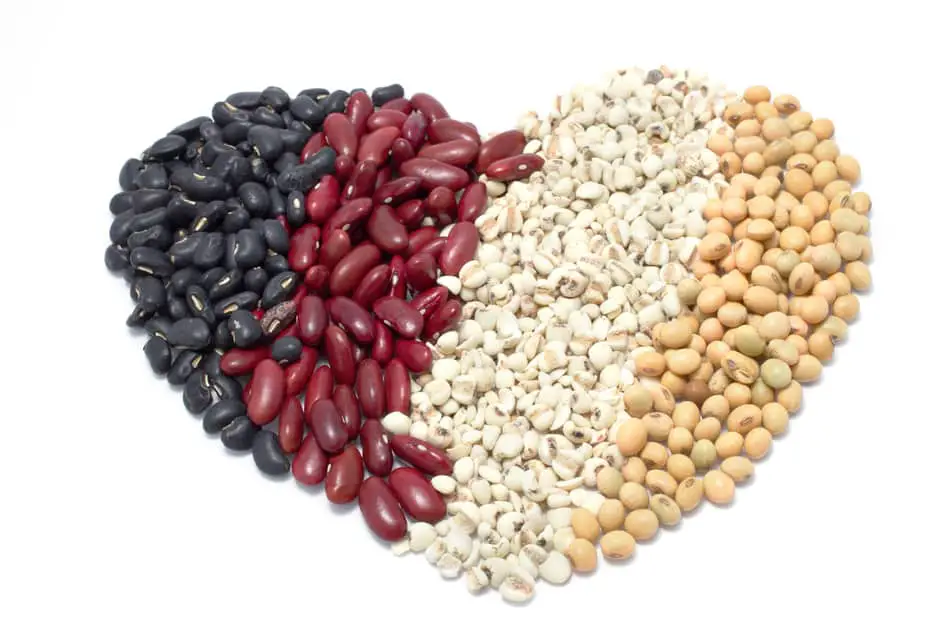
Summing it Up
Eat more beans! Of any type. Your health will benefit. If you only want to eat one type of bean, choose adzuki, for its overall high nutrient profile. Or choose black beans, also highly nutritious, but easier to find in stores.
If you liked this article, you might be interested in what the healthiest salad green is. Click here.
What’s the healthiest type of tea? Find out here.
Which fruit is the highest in fiber? Answer is here.
Resources
USDA FoodData Central
The Antioxidant Food Table (“Antioxidant Content” column)
1 Weickert MO, Pfeiffer AFH. Impact of dietary fiber consumption on insulin resistance and the prevention of type 2 diabetes. J Nutr. 2018;148(1):7-12. doi:10.1093/jn/nxx008.
2 Anderson, J. W., Baird, P., Davis, R. H., Jr, Ferreri, S., Knudtson, M., Koraym, A., Waters, V., & Williams, C. L. (2009). Health benefits of dietary fiber. Nutrition reviews, 67(4), 188–205. https://doi.org/10.1111/j.1753-4887.2009.00189.x.
3 Pereira MA, O’Reilly E, Augustsson K, et al. Dietary Fiber and Risk of Coronary Heart Disease: A Pooled Analysis of Cohort Studies. Arch Intern Med. 2004;164(4):370–376. doi:10.1001/archinte.164.4.370.
4 Masrul M, Nindrea RD. Dietary Fibre Protective against Colorectal Cancer Patients in Asia: A Meta-Analysis. Open Access Maced J Med Sci. 2019;7(10):1723-1727. Published 2019 May 30. doi:10.3889/oamjms.2019.265.
5 Papanikolaou, Y., & Fulgoni, V. L., 3rd (2008). Bean consumption is associated with greater nutrient intake, reduced systolic blood pressure, lower body weight, and a smaller waist circumference in adults: results from the National Health and Nutrition Examination Survey 1999-2002. Journal of the American College of Nutrition, 27(5), 569–576. https://doi.org/10.1080/07315724.2008.10719740.
6 Zhao, Y., Du, S. K., Wang, H., & Cai, M. (2014). In vitro antioxidant activity of extracts from common legumes. Food chemistry, 152, 462–466. https://doi.org/10.1016/j.foodchem.2013.12.006.
7 Winham DM, Hutchins AM. Perceptions of flatulence from bean consumption among adults in 3 feeding studies. Nutr J. 2011;10:128. Published 2011 Nov 21. doi:10.1186/1475-2891-10-128.
8 Queiroz, K., de Oliveira, A. C., Helbig, E., Reis, S. M., & Carraro, F. (2002). Soaking the common bean in a domestic preparation reduced the contents of raffinose-type oligosaccharides but did not interfere with nutritive value. Journal of nutritional science and vitaminology, 48(4), 283–289. https://doi.org/10.3177/jnsv.48.283.
